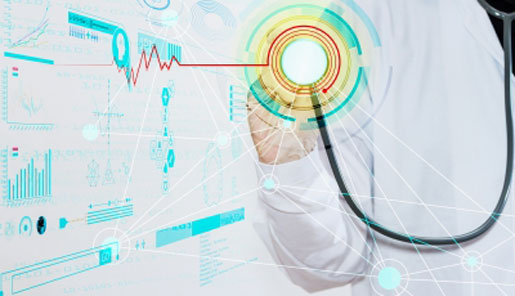How to Exceed Customer Expectations by Rethinking Next-Gen IoT Medical Devices
Internet of Things-enabled medical devices have great potential, but it's important for device developers to have a strong understanding of value creation in IoT-enabled medical products.
March 21, 2017

Internet of Things-enabled medical devices have great potential, but it's important for device developers to have a strong understanding of value creation in IoT-enabled medical products.
Shawn Oreschnick

This is a story you may be able to relate to. A medical device organization saw the potential of its medical-grade, in-hospital wearable device for a broader consumer audience. Certainly, changes were needed, the most significant of which included adding smartphone connectivity to allow for ongoing service and data collection. The engineering was not difficult. Even marketing the device through consumer pharmacy chains proved easier than expected; pharmacy technicians could easily explain the device and its intended use. It sold well. In fact, it sold better than expected.
Then the problems started.
The device needed regular calibration to maintain its efficacy--something the nursing staff at most hospitals had no trouble performing, but the average person found baffling. The organization's technical support staff was unaccustomed to handling callers without medical training, and both support staff and users were largely unfamiliar with the Bluetooth Low Energy connectivity and accompanying app. They completely flubbed most calls, leading to a dramatic number of returns. What's more, the lack of calibration destroyed any value the organization hoped to obtain from a larger patient dataset. What looked like a successful "chasm crossing" between the medical and consumer worlds turned into an unprofitable and demoralizing disaster.
What went wrong? How can we design better IoT-enabled medical devices to avoid such catastrophes?
What is missing is a deeper understanding of value creation in IoT-enabled products. This understanding will help us see through the complexity and allow us to anticipate (and avoid!) common problems. But first, we need a clear understanding of the differences in value creation between "traditional" (unconnected) products and IoT-enabled (connected) products.
Traditional products create "Product Value," which is exactly what you think it is: Features of the product deliver tangible and intangible benefits to a specific group of users. This is easier to understand with an example--let's use a professional North American football helmet. Its design features, including lightweight materials selection, strategically placed foam inserts, and brand customization, deliver protection from injury for the player, the ability to hear other teammates, and exciting team identification.
IoT-enabled products certainly deliver "Product Value," but their connectivity opens the door to two additional forms of value creation: Service Value and Information Value. That's the source of the complexity.
Service Value relates to the expectation of ongoing monitoring, maintenance, and improvement of the product. Many traditional products do this with warranty programs and upgrades, but always-on connectivity dramatically increases the speed of the feedback loop as well as the corresponding expectation for timely delivery of services.
To continue with the football helmet example, the manufacturer of the IoT-enabled version continually monitors sensors in the helmet, detecting significant damage or required maintenance ahead of when that helmet would become unsafe for the player. This not only saves the time and expense of maintaining every helmet but also provides the coach valuable information on the health and safety of his players. Buyers are likely paying for that connectivity in the helmet--or, for that matter, your medical device--and will not be content with lengthy delays in notification. You must plan for the infrastructure to support that connectivity and the human support that comes along with that expectation. You have now created an ongoing relationship with that buyer--not just a one-time purchase.
Finally, Service Value often leads to Information Value. This refers to the value of the data itself as an independently created value aside from direct impact to the buyer. Let's use the football helmet example one last time to illustrate the point. Fantasy football players are always looking for the next edge in their league play. They are hungry for more information, and are willing to pay for it. An IoT-enabled football helmet could provide additional information to provide the next level of immersive experience to fantasy fans. But if this data is not delivered accurately and reliably, the value disappears and an entire monetization pathway dries up.
If you decide to take advantage of the database you are creating with your IoT product, you must think ahead to the quality and reliability of that information. You must ensure that it aligns with the unique value third parties may wish to pay for it--not to mention the regulatory and privacy issues raised by making this data available.
The key to remember in each form of value creation is that it is unique to the recipient. In our example, we saw three unique value receivers: The players (Product Value), the coaches (Service Value), and fantasy sports leagues (Information Value). Each has different expectations of the three-part IoT value proposition.
You can apply the same methodology to your medical device. In those cases, what you deliver will be different, the recipients of that value will be different, and their willingness to pay (or not pay) will be different. However, examining unique value propositions for your IoT-enabled medical device through the lenses of Product, Service, and Information Value will help you not only anticipate and exceed user expectations, but also build a differentiated and profitable business.
Shawn Oreschnick is Director of Analytics & Research Services at Logic PD. Reach him at [email protected].
[Image courtesy of JK1991/FREEDIGITALPHOTOS.NET]
You May Also Like
.png?width=300&auto=webp&quality=80&disable=upscale)
